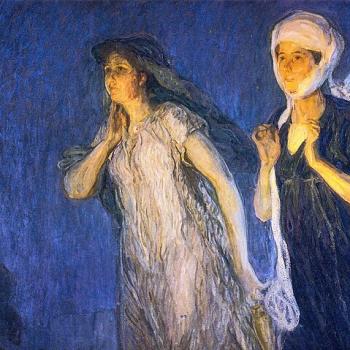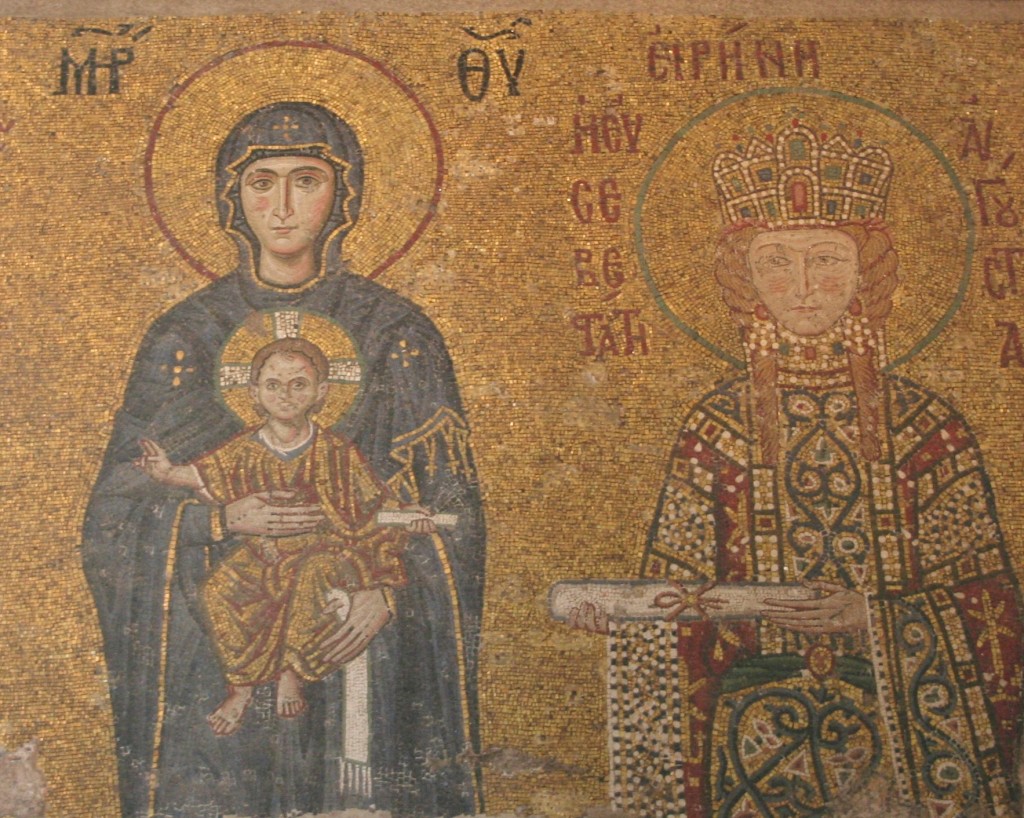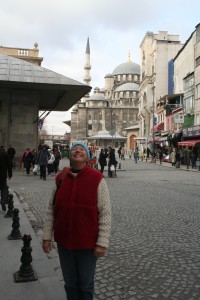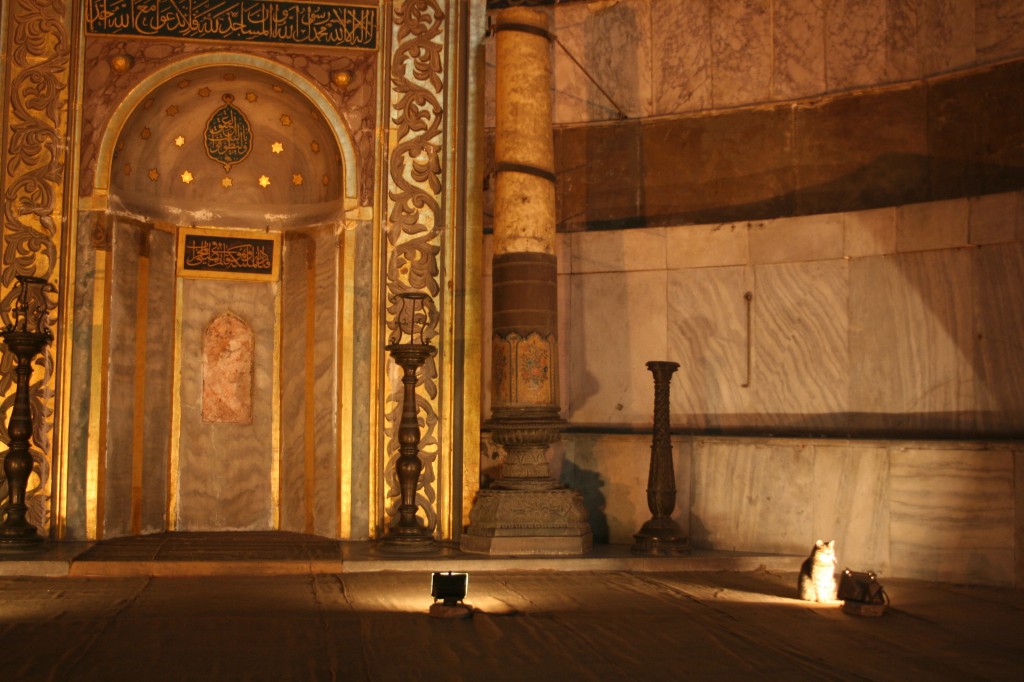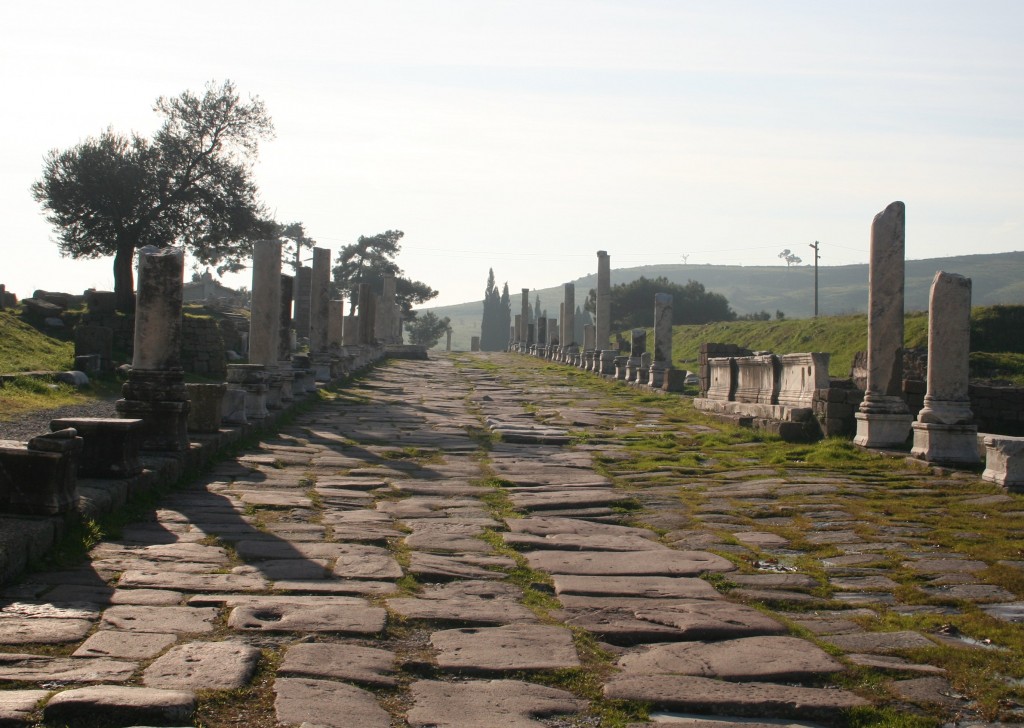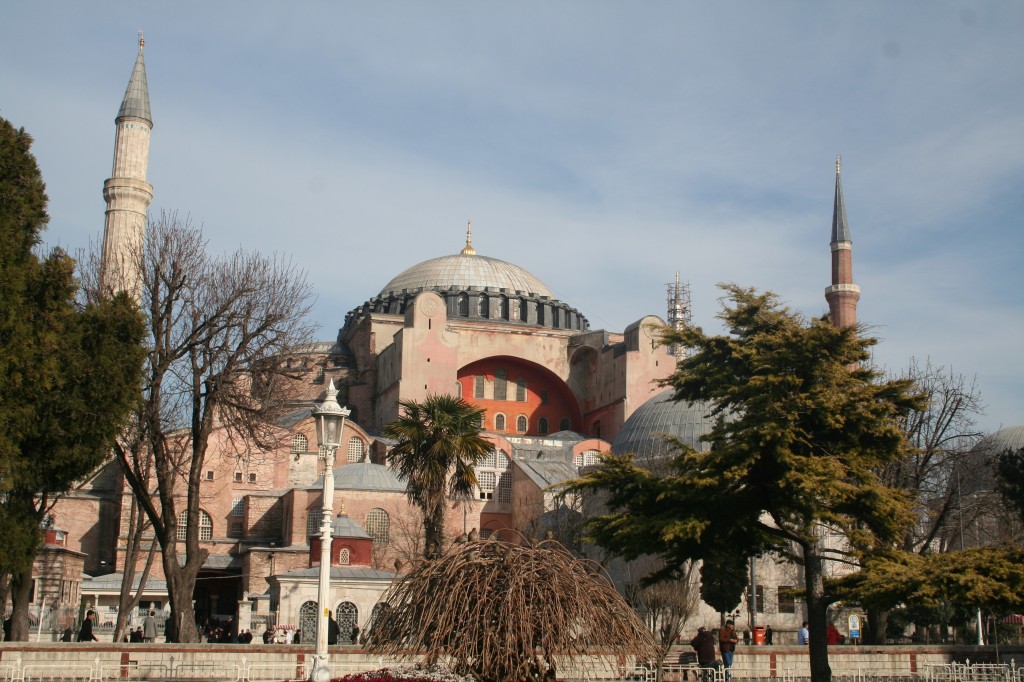
Imagine that you are an ordinary person in the sixth century, someone who lives in a modest dwelling and who has never been in a building taller than a couple of stories. Then one day you enter a new church constructed by the emperor, a place so resplendent, so opulent, and so huge that you can hardly believe it is real. As you walk through its massive doors, you enter into an interior that glitters with mosaics, icons, holy relics, and colored marble, all lit by thousands of flickering candles and lamps. And then you look up and see a perfectly shaped dome far above you, a dome that seems to float as if suspended on strings from the heavens.
Even wealthy ambassadors from Kiev could hardly believe that such a place existed. In a report sent back to their prince, they wrote this: “We knew not whether we were in heaven or on earth. For on earth there is no such splendor or such beauty…We cannot describe it, but this much we can say: there God dwells among mankind.”
So perhaps the Emperor Justinian should be forgiven the hubris of his claim after the church was completed: “Solomon, I have surpassed you!”
Built on the remains of two previous churches by the most skilled artisans and laborers of the empire, this sanctuary, the Church of Holy Wisdom, was the foremost wonder of the Byzantine world. Completed in AD 537, it was here that emperors were crowned and the Fifth and Sixth Ecumenical Councils met to chart the theological course of Christianity. Though sacked by crusaders in 1204 and shaken by numerous earthquakes, for nearly a thousand years it reigned as the preeminent cathedral of Christendom.
After Mehmet II conquered Constantinople in 1453, the church became one of the great mosques of the Muslim world. Its holy relics were removed, inscriptions from the Koran were painted on the interior of its great dome, and four minarets were built around its exterior. In the mid-nineteenth century, six large discs bearing the names of God, Muhammad, and the first caliphs and imams were added to its interior, completing the building’s unique blending of the iconography of two faiths.
When I started making plans to visit Turkey, it was this place—known as Hagia Sophia in Greek and Aya Sofya in Turkish—that I wanted to see most of all. Few religious sanctuaries have had a more fascinating past. Hagia Sophia actually includes traditions even older than Christianity and Islam, for its interior pillars are said to have been taken from pagan temples throughout the ancient world, including the great Temple to Artemis at Ephesus. (It is a building so old that it contains graffiti done by Vikings, for heaven’s sake.)
Since 1935 Hagia Sophia has been a museum, which given the complicated religious history of Turkey is probably a necessary compromise. It is a building in need of constant repair, with perpetually peeling plaster and acres of cracked marble. It has too many people tramping through it who see it as just a museum and not as a place of worship. It is poorly lit and it echoes with the voices of visitors.
And yet.
When I think back to my two visits to Hagia Sophia (for I had to go twice, since once was not nearly enough) the image that comes to my mind is the glow of burnished gold. Hagia Sophia is like a once stunningly beautiful woman whose face is now ravaged by age, but whose loveliness is still mesmerizing.
I look back at my pictures and realize that they don’t begin to do Hagia Sophia justice. Tomorrow I’ll post some snippets, but for today, here’s a brief video clip of its interior, shot when I was standing on its second floor and looking down into its main sanctuary. It’s a poor quality video, but it’s the only way I know to give you at least a little sense of the scale of this amazing place.




